Reflections from the Alpine: Allie Howell
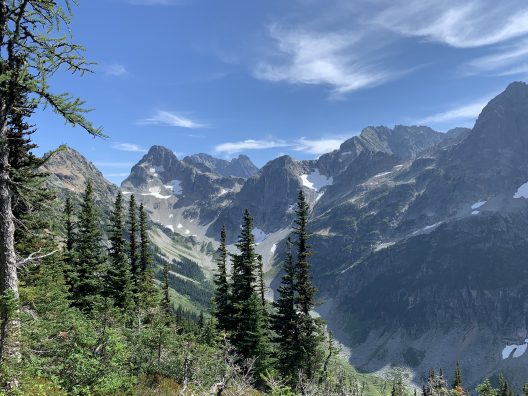
This summer as Rare Care Interns we worked on an alpine plant monitoring project for the National Park Service. On the surface, our job was simple: go to a site in Olympic, North Cascades, or Mt. Rainier National Parks, find the plant, map the edges of the population in the area, and usually set up a permanent plot to be monitored by the National Park Service in the future. When mapping, we take note of the site’s characteristics like the soil, associated species, and the plants’ phenology and abundance. For the permanent plots, we were responsible for creating a site-specific protocol to account for the differences we might encounter between populations, and then setting the plot on an ecotone to observe the effects climate change will have on plant distribution. Once we selected an appropriate location, we were to count the number of target plants, estimate percent cover of vegetation, rock, bare ground, litter, and nonvascular plants/lichen, and list associated species. In essence, we were field technicians.
However, that doesn’t adequately sum up what this internship entailed. First, we were given a lot of independence with this position. At the beginning of June, my coworker Jaileen and I were given a GIS file, a list of the sites we needed to go to, and which plants needed permanent plots. The rest, like renting a car, determining the trail to get there, obtaining the appropriate backpacking permits, learning where the plant or plants were last seen, and most of studying how to identify the target plant, was up to us. Second, words cannot describe how spectacular our office was this summer. The 360 degree views of glaciated mountaintops that came as a bonus with almost every site we monitored this summer were a constant reminder of how lucky I was.
While we were blessed with an easy drive up near Hurricane Ridge where we could jump out of the car, waltz down a well-worn trail, and be amongst an entire hillside of Synthyris pinnatifida var. lanuginosa, those glorious mountaintop views were often hard-earned. We backpacked into almost every site, usually between 7-10 miles, carrying heavy packs with both our camping and research supplies. After setting camp, we hiked even further to our sites.
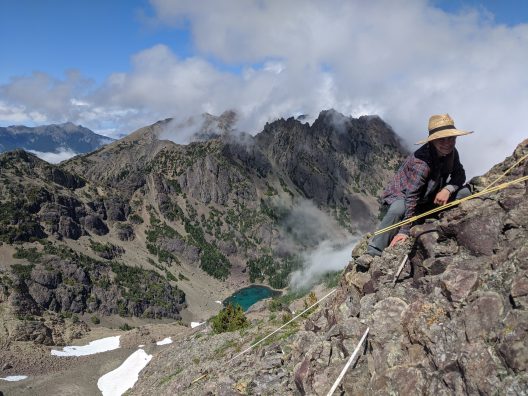
In addition to developing calve muscles of steel, one of the lessons from this internship that stands out most to me is that alpine plants, though cute and tiny, inhabit the harshest places. This became abundantly clear when trying to monitor them. For example, in search of a single point for Dryas drummondii var. drummondii, we stopped to gaze at the nearby, sapphire-blue alpine lakes below us as the wind blew the clouds below us out of the way, when Jaileen looked down to see the white, fluffy tips of the plants’ seeds peaking up from where they had anchored themselves on a vertical cliff face.
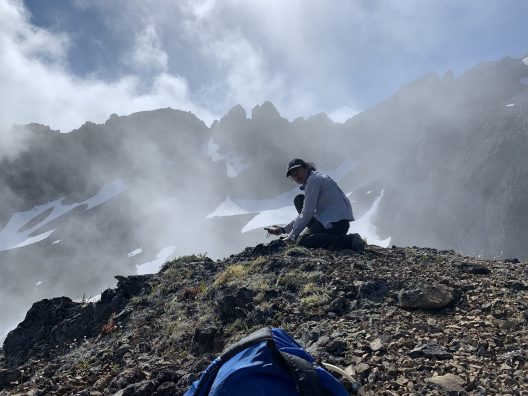
This internship also helped me get better at plant identification. Studying our target plants and their look-alikes in the office helped prepare us well for locating them in the field. For me, the most exciting part of this job was stumbling upon a target plant for the first time. Near Warrior Peak, for example, as we hiked along the ridge, we walked past a cool, rocky outcrop—perfect Micranthes tischii habitat. Clinging to the ledge, I looked up and about a foot from my face was the unmistakable tiny rosette of toothed leaves and a short inflorescence of red, seemingly apetalous flowers. I knew instantly—the plant met all the criteria that we’d studied, and was in the habitat I expected. It felt good to have our studying pay off.
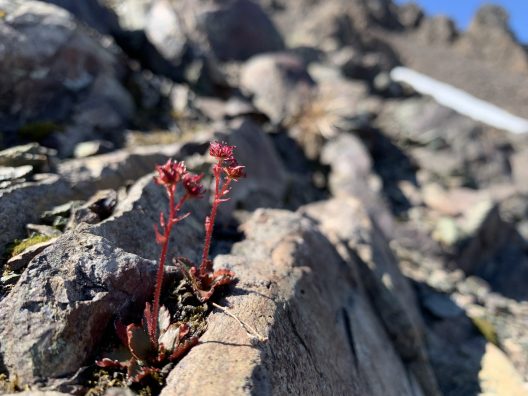
We also were responsible for identifying associated species for our target plants. The diversity of habitats in alpine terrain made this overwhelming at first; the community of plants that grows on rocky cliff sides is completely different from the cushion plant communities that cover flatter terrain with more intact soil. However, over time we grew familiar with the more common species for our sites and gained experience keying out new or unknown plants.
Obviously, the plants we monitored are rare or potentially threatened endemics (we work for Rare Care, after all), but after seeing entire mountainsides of Synthyris, or Draba lonchocarpa making an appearance on practically every cliff, it’s easy to forget these plants are fighting a losing battle to persist as a warming climate pushes their suitable ranges farther and farther uphill, or rapidly changes weather patterns. We witnessed a poignant reminder of this at a site near Stehekin. Our task there was to investigate two recorded sightings from 1984 of Saxifraga hyperborea, a tiny plant that loves cool, moist, rocky outcrops. But the site was anything but cool or moist. Unlike the lush, green Olympic Mountains we spent our first weeks in, the rocky mountainsides along Lake Chelan on the ferry to Stehekin were covered in dry, brown grasses. Our 8 mile hike up the 6,000 feet elevation gain to our site took us through forests at various stages of succession following recent fires. By the time we reached our site, the trail dust had turned my legs several shades darker.
That evening, I went to scout one of the points next to our camp in the basin below the peak. The cliffs were dry, baking under south-facing full sun; I found it hard to believe our target species had ever inhabited that area. The next morning we decided to explore the more promising point on the north-facing cliffs, partly shaded by larches and other pines, on the way up to Boulder Butte. Drying moss crept out from a few cracks between the rocks.
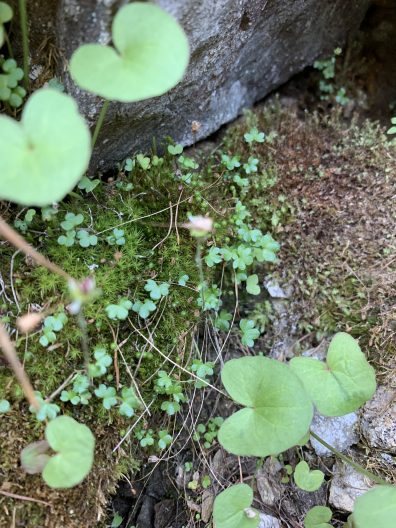
But we searched the area around the point and couldn’t find Saxifraga hyperborea. Defeated, we walked back down from the summit, but decided to stop once more at a small section of rock we hadn’t quite searched. In a mossy vein running in a small crack down the cliff, I spotted the tiny, centimeter wide leaves. They were so dense that in setting the permanent plot we had trouble distinguishing between clusters of plants. Still, the vein was no more than 2 square meters total. As we hammered in the nail to mark the plot, I couldn’t help but wonder if whoever returned to the site would get to see the plants too, or if perhaps they’d just find partly desiccated moss and some phloxes or heathers like the surrounding habitat.
As the last set of interns working on this alpine plant monitoring project, I am so grateful for the opportunity I had to visit all of our beautiful sites while gaining valuable field and plant identification experience. I have also gained an appreciation for what challenging growing conditions alpine plants face, and therefore how fragile their ecosystems are. Rather than be the last to see some of these populations, I hope that our work will make valuable contributions to the continued survival of these plants and protection of these amazing places.